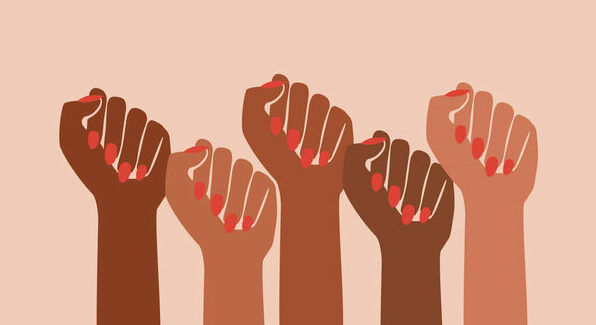
Intersectionality and care safety | Becoming aware and taking action !
While feminism analyzes gender power dynamics, the intersectional approach takes this analysis even further. What are the systems of oppression within the feminist movement? Are women equal among themselves? Who is at the intersection of these systems of oppression? Is the reality of black women, for example, taken into account in the feminist movement, composed primarily of white women?
As feminists, intersectionality is at the heart of our concerns. Over the last few years, several events occurred that reminded us that discrimination against women is exacerbated by systems of oppression. For example, when it comes to the forced sterilization of Indigenous and racialized women, access to housing, access to adequate care in the health network, etc. But our responsibility does not end with becoming aware. We must also question our way of being women of action, who are progressive, and who take action to combat racism within our ranks, among our colleagues and patients and even society in general. These were the issues discussed at the Women’s Network on October 27, 2021.
Starting in 1989, Afro-American feminist Kimberlé Crenshaw started probing deeper into these questions and her work was foundational in creating the theory of intersectionality. In her conference, Rosa Pires explored this concept, which ties together a variety of systems of oppression such as racism, social class, colonialism and capitalism.
The prism of intersectionality is meant to be a tool for social justice to overcome universalism as the dominant conception and move toward pluriversalism. More concretely, this means that to deconstruct a system of oppression, different narratives, knowledge and experiences must coexist while disregarding all forms of hierarchy. But it is important to take into consideration that power dynamics are not static, they evolve over time and are not linear. Sometimes things regress. Looking through the lens of intersectionality allows us to reduce discrimination at different levels of decision-making within organizations and in public spaces.
Culturally safe care
Once the concept of intersectionality was demystified, with the help of speaker Pamela Farman, healthcare professionals wanted to deepen their reflections on issues of discrimination by addressing the topic of care safety, a core principle of their profession.
For Ms. Farman, culturally safe care means care that is provided in a way that respects the cultural identity of a patient, that strives for equity and is exempt of toxic power dynamics maintained by the health care system. More specifically, it means providing equitable health care that is free of any unconscious bias.
This responsibility does not belong to healthcare professionals alone, far from it. The organization of the health system has a major role to play. For example, is there a translation service for people for whom language is a barrier to accessing health care? Is there training for staff who work with vulnerable or marginalized populations? Are people of different races the targets of micro-aggressions and micro-inequities? All of these questions help to ascertain if there is a structure in place to combat racism and systemic discrimination.
Moreover, important connections can be made between health and racism. Exposure to racism is a social determinant of health in that it accentuates inequality in the care provided. It is impossible for such a violent system to not have an impact on the health of those who experience it, and these repercussions do not disappear over time. Furthermore, researchers are increasingly studying intergenerational trauma related to these questions.
The idea behind combating layers of oppression and promoting culturally safe care is to centralize the margins. Are we leaving some people behind in our fight for equality? Who are we forgetting when we fight for the right to health? How do we create spaces of mobilization that are free of all types of violence? How do we break down obstacles to participating in union life? And how do we set the foundations for a dialogue in which all voices are heard and recognized? This is the challenge we choose to take on every day. That is why we must postulate that the liberation of all must pass by the freedom of the most marginalized, the most oppressed. In the end, no one is truly free until we all are…